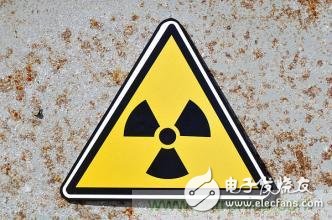Progress in research
If electromagnetic fields can pose a health threat, then all industrialized countries will be spared. The public is increasingly eager to answer specific questions about whether electromagnetic fields in everyday life can cause harmful effects on health. The media seems to have often given a definitive answer. However, everyone needs to be cautious about these news reports, knowing that the main interest of the media is not educating the public. A journalist is subject to many non-technical factors in selecting and reporting news. For example, journalists and journalists must compete in time and space. Different newspapers and magazines must compete for circulation. Close contact with as many people as possible and novel, sensational news headlines can achieve these goals - bad news can be bigger news and the only news we can often hear. A large number of studies that reflect the harmlessness of electromagnetic fields are rarely reported. Although science cannot provide absolute security guarantees, more research progress can make us more and more assured.

Need different types of research
Interdisciplinary research in different subject areas is necessary to evaluate the possible harmful effects of electromagnetic fields on the human body. Different types of research explore different aspects of this problem. The laboratory research of biological cells is mainly to clarify the basic mechanism of the connection between exposure and biological effects under electromagnetic fields. They try to identify the molecular and cellular changes based on electromagnetic fields, and such changes can provide clues as to how physical effects translate into biological effects in the human body. In these studies, individual cells and tissues were removed from normal living conditions and some compensation mechanisms may fail.
Another type of research is animal research, which is closer to the real human condition. These studies provide more direct evidence for the development of safety standards for human exposure, and several different intensities of electromagnetic fields are often used in research to explore dose-response relationships.
Epidemiological investigations or studies of human health are another direct source of information on long-term exposure effects. These studies explore the etiology and incidence of disease in real-life situations, including living communities and occupational groups. Researchers have tried to find a data link between exposure to electromagnetic fields and the onset of a disease or harmful health effects. However, epidemiological investigations require a lot of human, material and financial resources. More importantly, they need to measure in very complex populations, and it is difficult to control various conditions to detect very small effects. For these reasons, scientists will consider all relevant evidence when making judgments about possible health threats, including epidemiological studies, animal experiments, and cell experiments.
Interpretation of the results of epidemiological studies
Individual epidemiological investigations cannot establish a clear causal relationship, mainly because they can only find statistical connections between exposure and disease under electromagnetic fields, but this connection is not necessarily caused by exposure. Imagine a hypothetical study that found that exposure of electric workers working at X Power to electromagnetic fields is associated with an increased risk of cancer. Even if statistical connections can be observed, they may be caused by incomplete data from other factors in the workplace. For example, electric workers may be exposed to chemical solvents that can cause cancer. In addition, the statistical connections observed may be due to some statistical effects or to the design of the study itself.
Therefore, finding a certain relationship between a substance and a disease does not necessarily mean that the substance causes the disease. Determining causal links requires researchers to consider many factors. If there is a consistent and strong link between electromagnetic field exposure and consequences, there is a clear dose-effect relationship, a credible biological explanation, and support from relevant animal experiments, all of which are consistent with each other. The causal link of the case will be stronger. In the experiments on electromagnetic fields and cancer, these conditions did not exist. This is one of the important reasons why most scientists generally do not accept the view that weak electromagnetic fields have health effects.
Difficulties in eliminating the possibility of minor risks
“There is no evidence that the existence of harmful effects seems to be insufficient in modern society. On the contrary, more and more demands are to provide evidence that harmful effects do not exist†(Barnabas Kunsch, Seibersdorf Research Center, Austria).
“There is no convincing evidence that electromagnetic fields can have harmful health effects†or “the causal relationship between electromagnetic fields and cancer has not been confirmed.†It is the general conclusion of the expert committee that has investigated this issue. It sounds like the scientific community is avoiding giving answers. So why have scientists found no effect, and research will continue?
The answer is simple. Human health research can easily reveal obvious effects, like the link between smoking and cancer. Unfortunately, these studies do not easily distinguish between insignificant effects and no effects at all. If the electromagnetic field is an obvious carcinogen in a normal environment, it will be easily discovered long ago. In contrast, if the weak electromagnetic field is a weak carcinogen, or is only a strong carcinogen to a small group of people, it is very difficult to find this effect. In fact, even if a large study confirms that there is no connection between the two, we still cannot be completely sure that there is absolutely no connection. The absence of an effect may mean that this effect is really absent, and it may mean that this effect is not only detectable under our observation methods. Therefore, the persuasiveness of a negative result is usually less convincing than the apparent positive result.
The most difficult situation is that, as unfortunately in epidemiological studies of electromagnetic fields, a series of studies of weak positive results are inconsistent with each other. In that case, the scientists themselves may also have differences in the significance of the data. However, for the reasons explained above, most scientists and clinicians believe that any health effects of low-intensity electromagnetic fields, if any, and other health threats that humans face in their daily lives must also be very small. .
What is the future like?
The main purpose of the World Health Organization's International Electromagnetic Field Project is to mobilize and coordinate researchers around the world to respond adequately to public concerns. This project will integrate the results of cell, animal and human health research to make the assessment of health risks as complete as possible. A complete assessment of the various relevant credible studies will provide the most reliable answers to the long-term effects of exposure to weak electromagnetic fields.
One way to explain the need for evidence from different types of research is to use a lyrics game. In order to get the answer to the lyrics absolutely, all nine spaces must be filled. Suppose we can only fill in three of them, and we may be able to guess the final answer. However, these three letters may also be part of another completely different word. Each additional letter will increase our information. In fact, science may never fill all the grids, but the more evidence we collect, the more accurate the guess for the final answer.

The nine words in the horizontal row are: cell, exposure, dose-response relationship, statistics, human, repeatable, animal, pathology, epidemiology. Vertical words are deterministic. Image source: WHO.
Summary of points:
1. Laboratory research on biological cells is mainly to determine the mechanism of biological effects caused by exposure under electromagnetic fields. The effects of animal experiments are necessary for determining high-level organisms that are physiologically similar to humans to some extent. Epidemiological investigations are looking for a statistical link between the exposure of an electromagnetic field and the result of some harmful health in the human body.
2. Finding a certain relationship between a substance and a disease does not mean that the substance causes the disease.
3. No health effects are found, which may mean that this effect is not, and it may mean that this effect is not detected under our current observation methods.
4. When conclusions about possible health risks of suspected environmental threats, various research findings (cytology, animal experiments, and epidemiology) must be considered together. Consistent evidence from these completely different types of research can increase the credibility of the existence of a real effect.
Aluminum circuit boards is a metal-based copper clad plate with good heat dissipation function. Generally, the single layer is composed of three-layer structure, which is a circuit layer (copper foil), an insulating layer and a metal base layer. Also used for high tech use is designed as double layers, the structure is circuit layer, insulation layer, aluminum base, insulation layer, circuit layer. A very small number of applications are multi-layer boards, which can be made of ordinary multi-layer boards combined with an insulating layer and an aluminum base.
Aluminum PCB characteristics
â— Surface Mount Technology (SMT);
â— Extremely efficient treatment of thermal diffusion in circuit design;
â— Reduce product operating temperature, increase product power density and reliability, and extend product life;
â— Reduce product size and reduce hardware and assembly costs;
â— Replace the fragile ceramic substrate for better mechanical durability.
Aluminum PCB use:
â— Audio equipment
Input, output amplifiers, balanced amplifiers, audio amplifiers, preamplifiers, power amplifiers, etc.
â— Power supply equipment
Switching regulator, DC/AC converter, SW regulator, etc.
â— Communication electronic equipment
High frequency amplifier, filtering appliance, reporting circuit, etc.
â— Office automation equipment
Motor drive, etc.
â— Automotive
Electronic regulator, ligniter, power controller, etc.
â— Computer
CPU board, floppy disk drive, power supply unit, etc.
â— Power module
Inverter, solid relay, rectifier bridge and so on.
â— LED lighting
With the promotion of energy-saving lamps, various energy-saving and beautiful LED lamps have been well received by the market, and aluminum PCB used for LED lamps have also begun to be applied on a large scale.
Aluminium Pcb,Aluminum Pcb Prototyping,Aluminium Pcb Board,Aluminium Circuit Boards
Chuangying Electronics Co.,Ltd , https://www.cwpcb.com